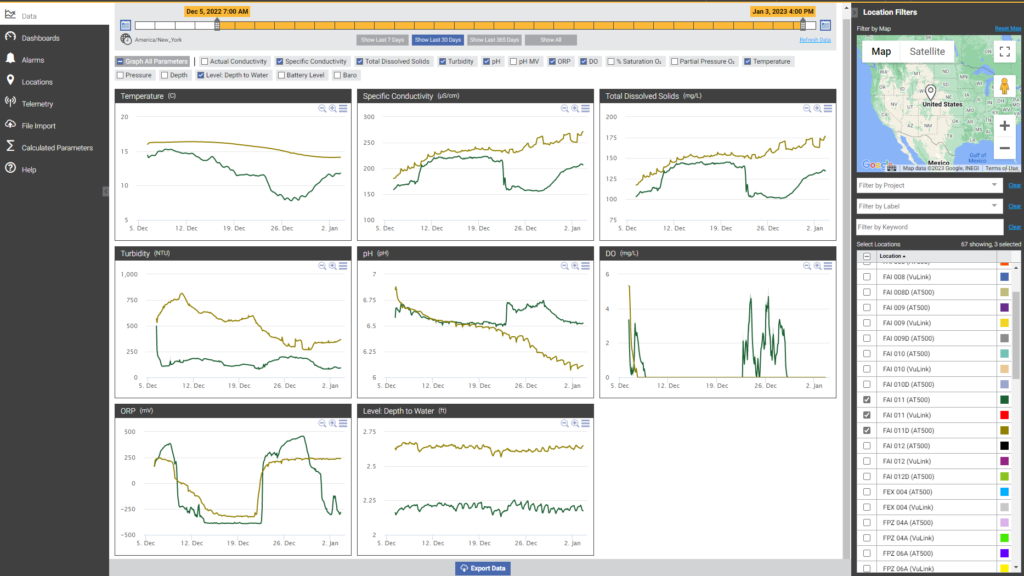January 4, 2023
Installation of Shallow/Surface Wells and Deployment of In Situ Sensors at the F-Area Wetlands
The ALTEMIS team collaborated with SRNS-ACP to install shallow piezometer wells and surface water monitoring points for the deployment of in situ multiparameter sensors near the F-Area wetlands of Fourmile Branch. The objective of this project is to support development and implementation of a long-term strategy that is focused on ensuring remobilization of attenuated contaminants does not occur. The new approach focuses primarily on monitoring systemic changes in groundwater flow and chemistry that could potentially remobilize attenuated contaminants rather than focusing on increases in contaminant concentrations after they have been remobilized.
For this project, the scope entailed the installation of six (6) shallow piezometer wells along with six (6) surface water monitoring points (SWMPs) within shallow streams. Each shallow well and SWMPs was hand-augered and constructed using 2-in Sch. 40 PVC and a 1-ft screen. After the well installation was completed, SRNL proceeded with the deployment of thirteen (13) in situ sensors in the shallow/surface wells (Figure 1). The sensors used in this study can provide inexpensive “master variable” data such as temperature, pH, oxidation-reduction potential (ORP) and specific conductivity data. Monitoring data can be accessed remotely as shown in Figure 2. Evaluating “master variables” will be useful in long-term monitoring for assessing changes in the stability of immobilized contaminants at the F-Area wetlands along Fourmile Branch. The field deployment of these sensors is planned to be for five years.

Figure 1. Installation of Shallow/Surface Wells and Deployment of In Situ Sensors.

Figure 2. Hydrovu website showing monitoring data from recently installed in situ sensors
